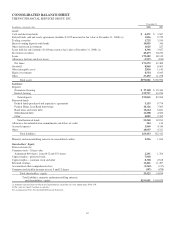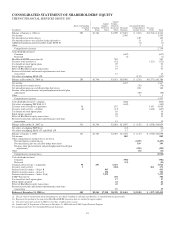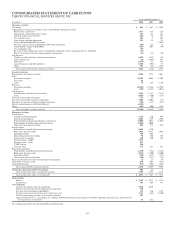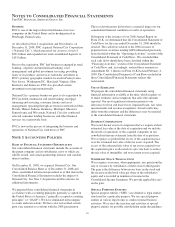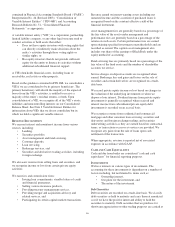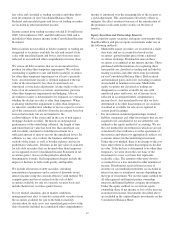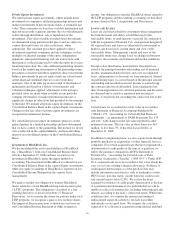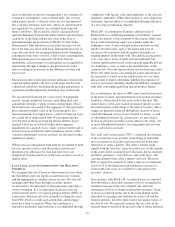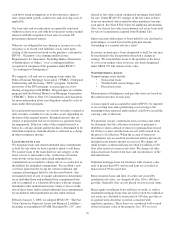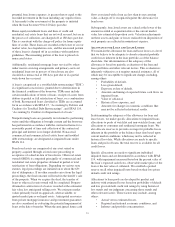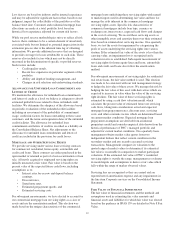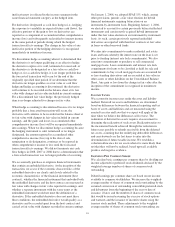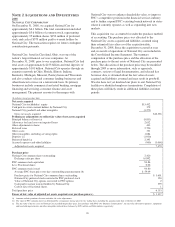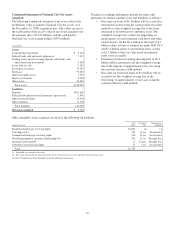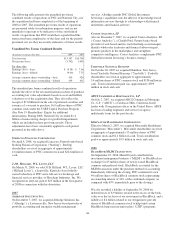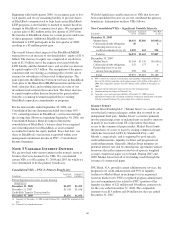PNC Bank 2008 Annual Report Download - page 96
Download and view the complete annual report
Please find page 96 of the 2008 PNC Bank annual report below. You can navigate through the pages in the report by either clicking on the pages listed below, or by using the keyword search tool below to find specific information within the annual report.Loss factors are based on industry and/or internal experience
and may be adjusted for significant factors that, based on our
judgment, impact the collectibility of the portfolio as of the
balance sheet date. Consumer and residential mortgage loan
allocations are made at a total portfolio level based on
historical loss experience adjusted for current risk factors.
While our pool reserve methodologies strive to reflect all risk
factors, there continues to be a certain element of uncertainty
associated with, but not limited to, potential imprecision in the
estimation process due to the inherent time lag of obtaining
information. We provide additional reserves that are designed
to provide coverage for losses attributable to such risks. These
reserves also include factors which may not be directly
measured in the determination of specific or pooled reserves.
Such factors include:
• Credit quality trends,
• Recent loss experience in particular segments of the
portfolio,
• Ability and depth of lending management, and
• Changes in risk selection and underwriting standards.
A
LLOWANCE FOR
U
NFUNDED
L
OAN
C
OMMITMENTS AND
L
ETTERS OF
C
REDIT
We maintain the allowance for unfunded loan commitments
and letters of credit at a level we believe is adequate to absorb
estimated probable losses related to these unfunded credit
facilities. We determine the adequacy of the allowance based
on periodic evaluations of the unfunded credit facilities
including an assessment of the probability of commitment
usage, credit risk factors for loans outstanding to these same
customers, and the terms and expiration dates of the unfunded
credit facilities. The allowance for unfunded loan
commitments and letters of credit is recorded as a liability on
the Consolidated Balance Sheet. Net adjustments to the
allowance for unfunded loan commitments and letters of
credit are included in the provision for credit losses.
M
ORTGAGE AND
O
THER
S
ERVICING
R
IGHTS
We provide servicing under various loan servicing contracts
for commercial, residential, home equity, automobile and
credit card loans. These contracts are either purchased in the
open market or retained as part of a loan securitization or loan
sale. All newly acquired or originated servicing rights are
initially measured at fair value. Fair value is based on the
present value of the expected future cash flows, including
assumptions as to:
• Interest rates for escrow and deposit balance
earnings,
• Discount rates,
• Stated note rates,
• Estimated prepayment speeds, and
• Estimated servicing costs.
For subsequent measurements, we have elected to account for
our commercial mortgage loan servicing rights as a class of
assets and use the amortization method. This election was
made based on the unique characteristics of the commercial
mortgage loans underlying these servicing rights with regard
to market inputs used in determining fair value and how we
manage the risks inherent in the commercial mortgage
servicing rights assets. Specific risk characteristics of
commercial mortgages include loan type, currency or
exchange rate, interest rates, expected cash flows and changes
in the cost of servicing. We record these servicing assets as
other intangible assets and amortize them over their estimated
lives based on estimated net servicing income. On a quarterly
basis, we test the assets for impairment by categorizing the
pools of assets underlying the servicing rights into various
stratum. If the estimated fair value of the assets is less than the
carrying value, an impairment loss is recognized and a
valuation reserve is established. Subsequent measurement of
servicing rights for home equity lines and loans, automobile
loans and credit card loans also follow the amortization
method.
For subsequent measurement of servicing rights for residential
real estate loans, the fair value method is used. This election
was made to be consistent with our risk management strategy
to hedge the fair value of these assets. We manage this risk by
hedging the fair value of this asset with derivatives which are
expected to increase in value when the value of the servicing
right declines. The fair value of these servicing rights is
estimated by using a cash flow valuation model which
calculates the present value of estimated future net servicing
cash flows, taking into consideration actual and expected
mortgage loan prepayment rates, discount rates, servicing
costs, and other economic factors which are determined based
on current market conditions. Expected mortgage loan
prepayment assumptions are derived from an internal
proprietary model and consider empirical data drawn from the
historical performance of PNC’s managed portfolio and
adjusted for current market conditions. On a quarterly basis,
management obtains market value quotes from two
independent brokers that reflect current conditions in the
secondary market and any recently executed servicing
transactions. Management compares its valuation to the
quoted range of market values to determine if its estimated
fair value is reasonable in comparison to market participant
valuations. If the estimated fair value of PNC’s residential
servicing rights is outside the range, management re-evaluates
its model inputs and assumptions to derive a fair value which
falls within the range of market observed values.
Servicing fees are recognized as they are earned and are
reported net of amortization expense and any impairments in
the line item Corporate services on the Consolidated Income
Statement.
F
AIR
V
ALUE OF
F
INANCIAL
I
NSTRUMENTS
The fair value of financial instruments and the methods and
assumptions used in estimating fair value amounts and
financial assets and liabilities for which fair value was elected
based on the guidance in SFAS 159 are detailed in Note 8 Fair
Value.
92


